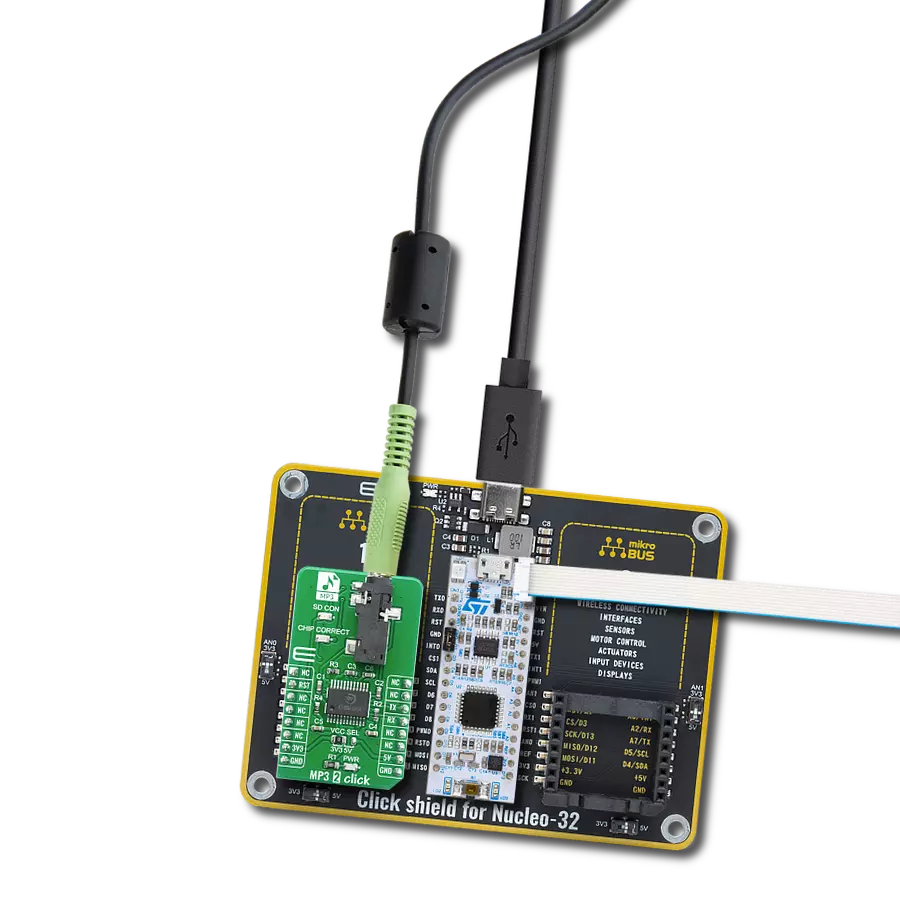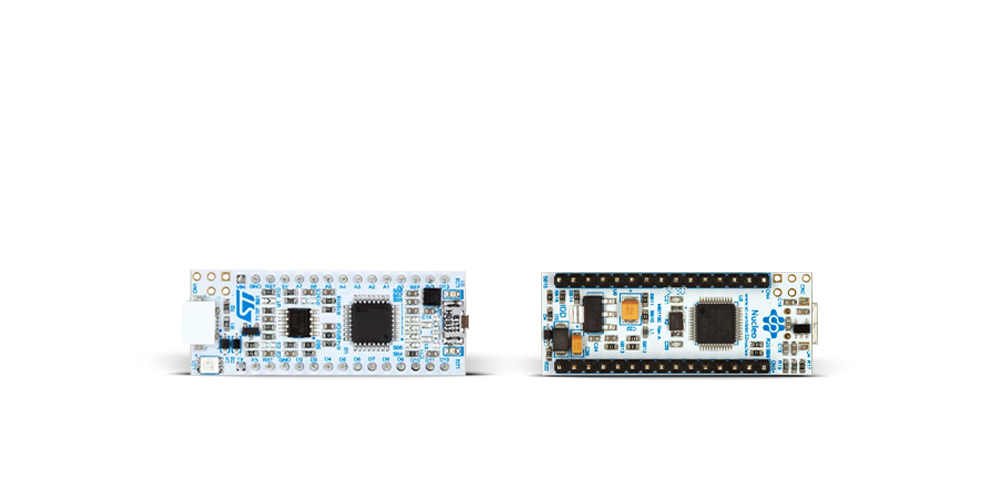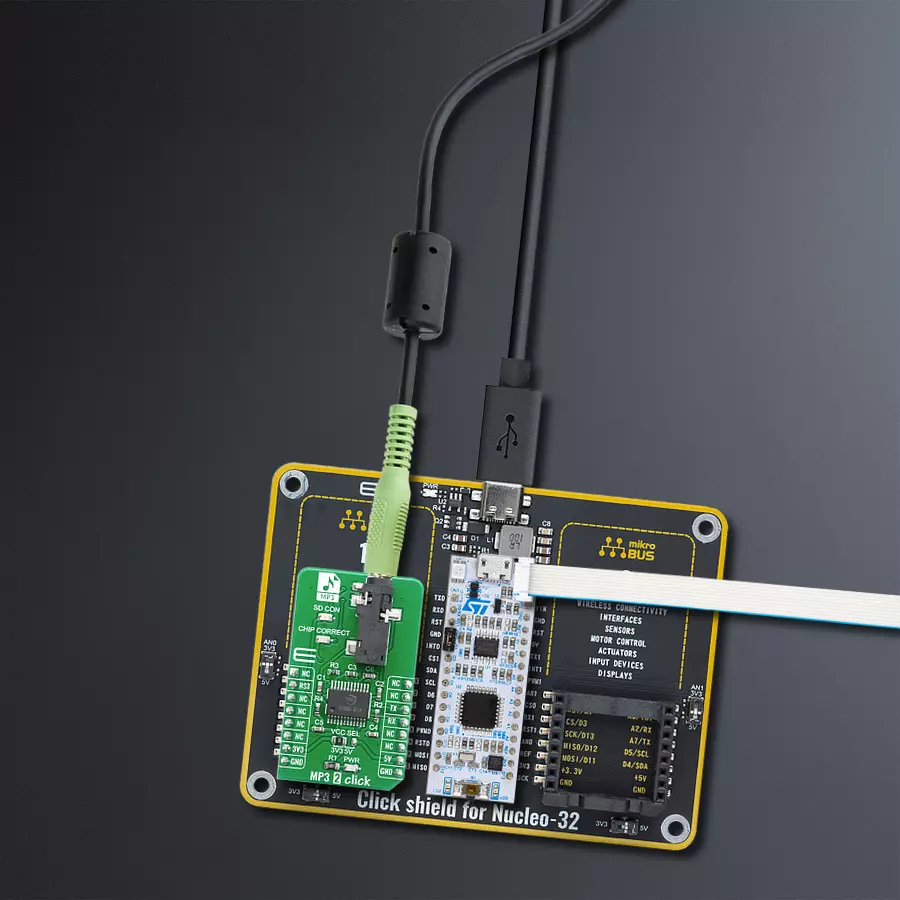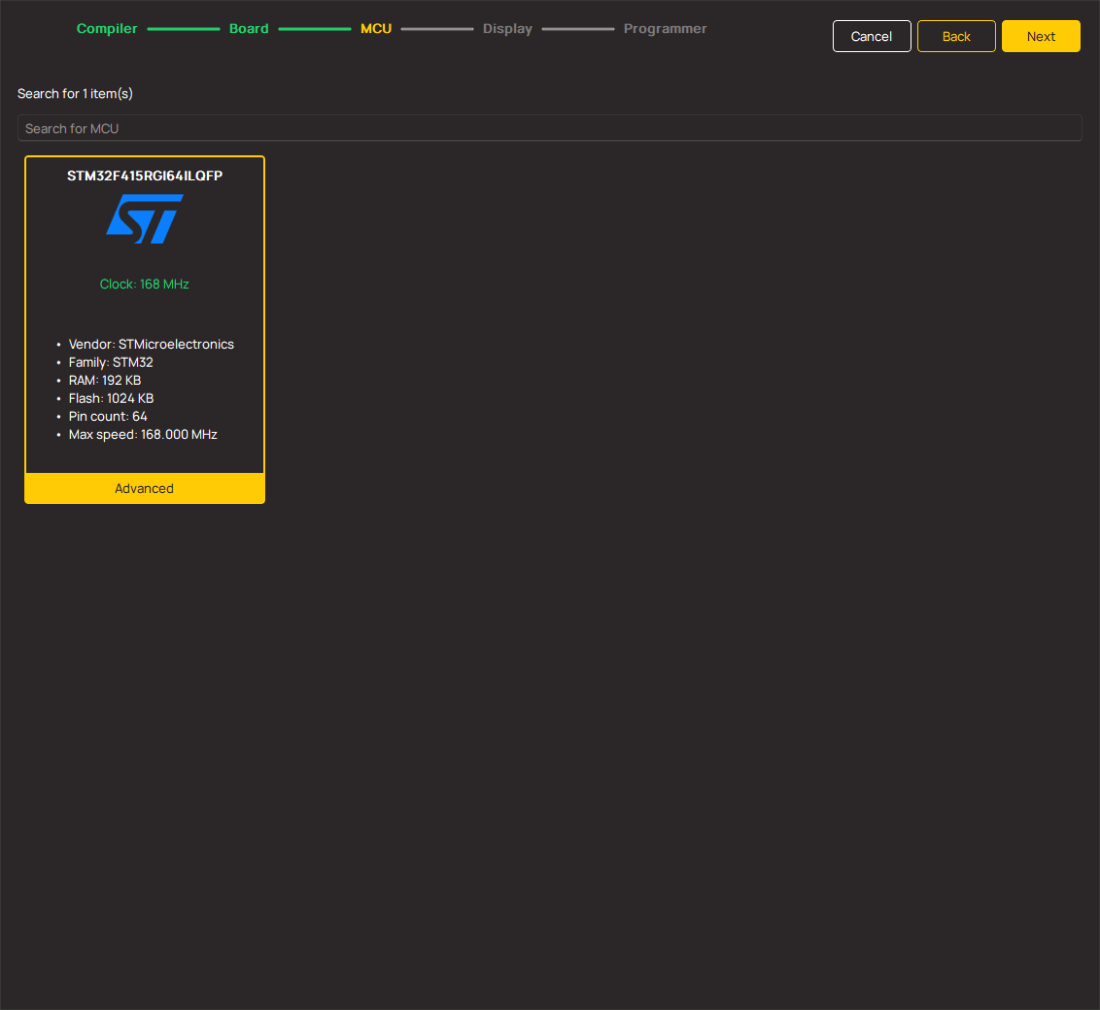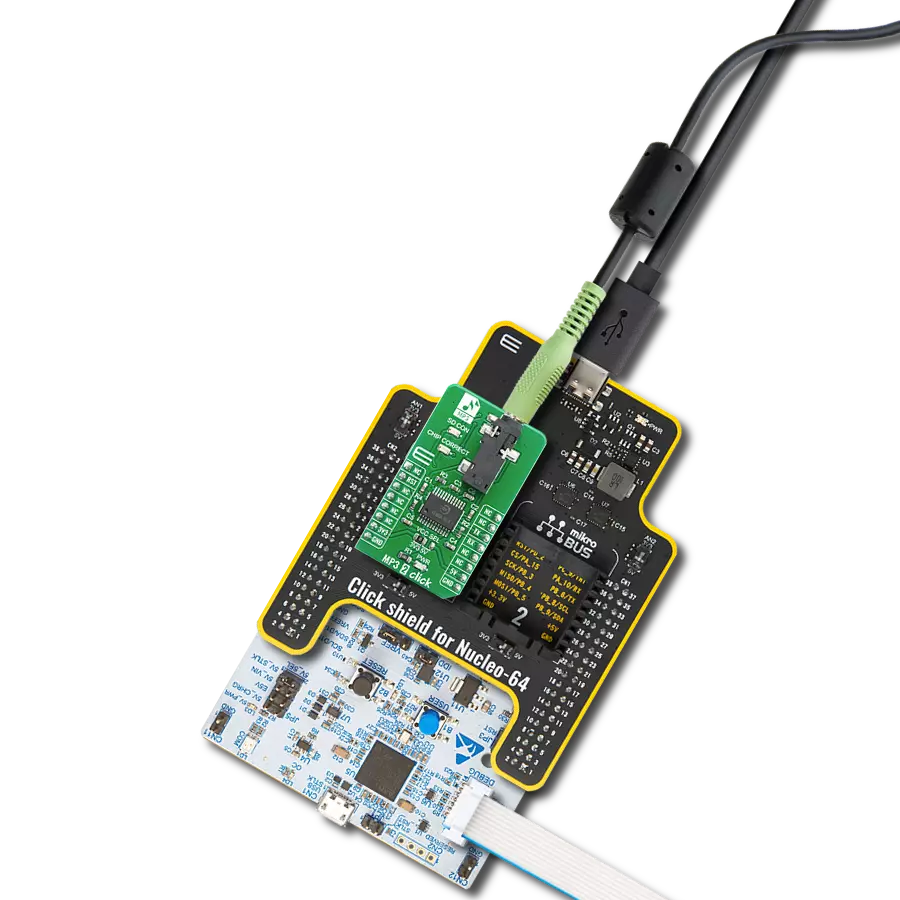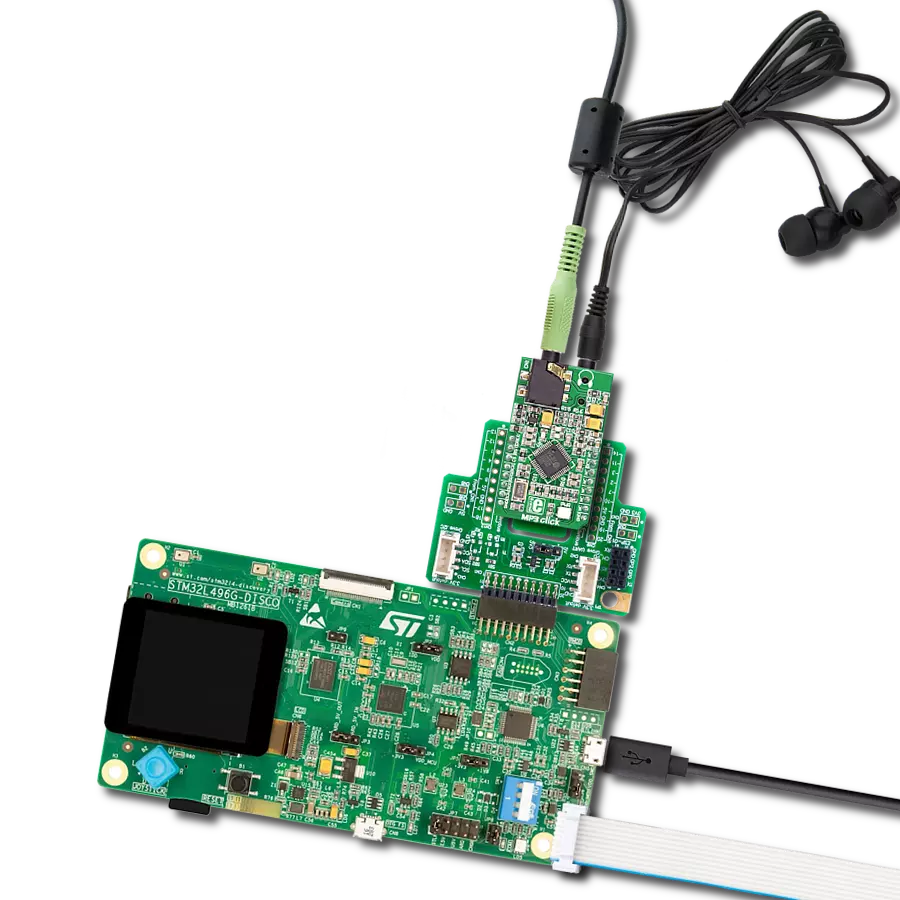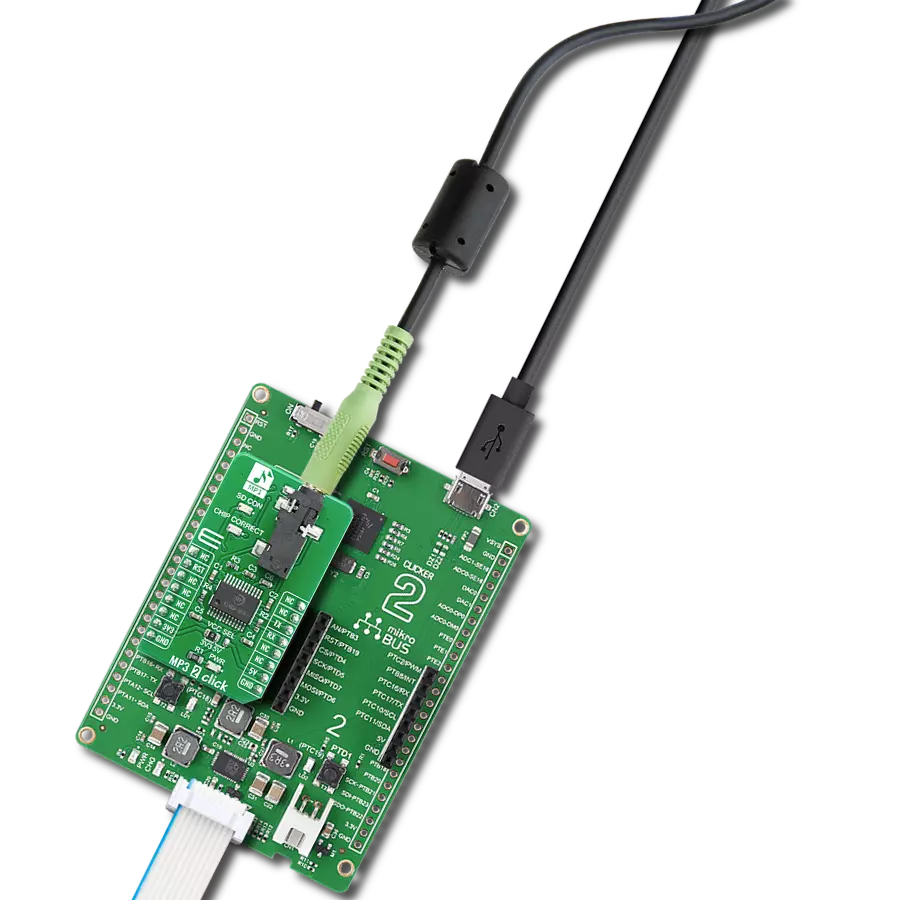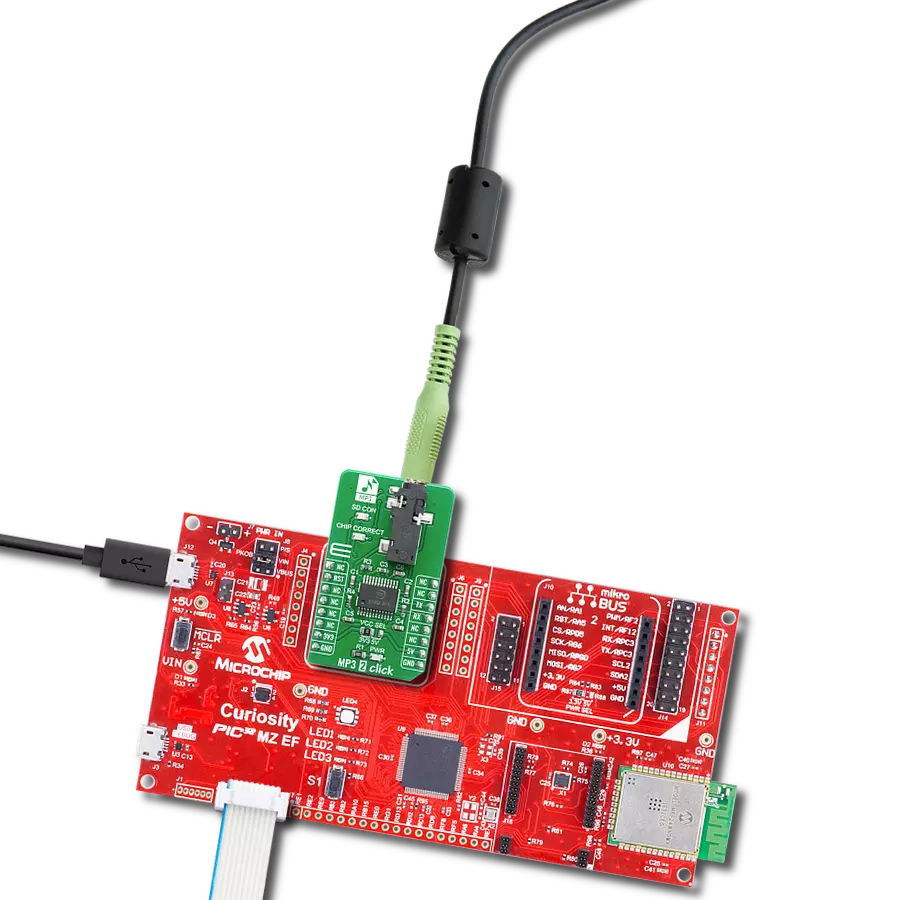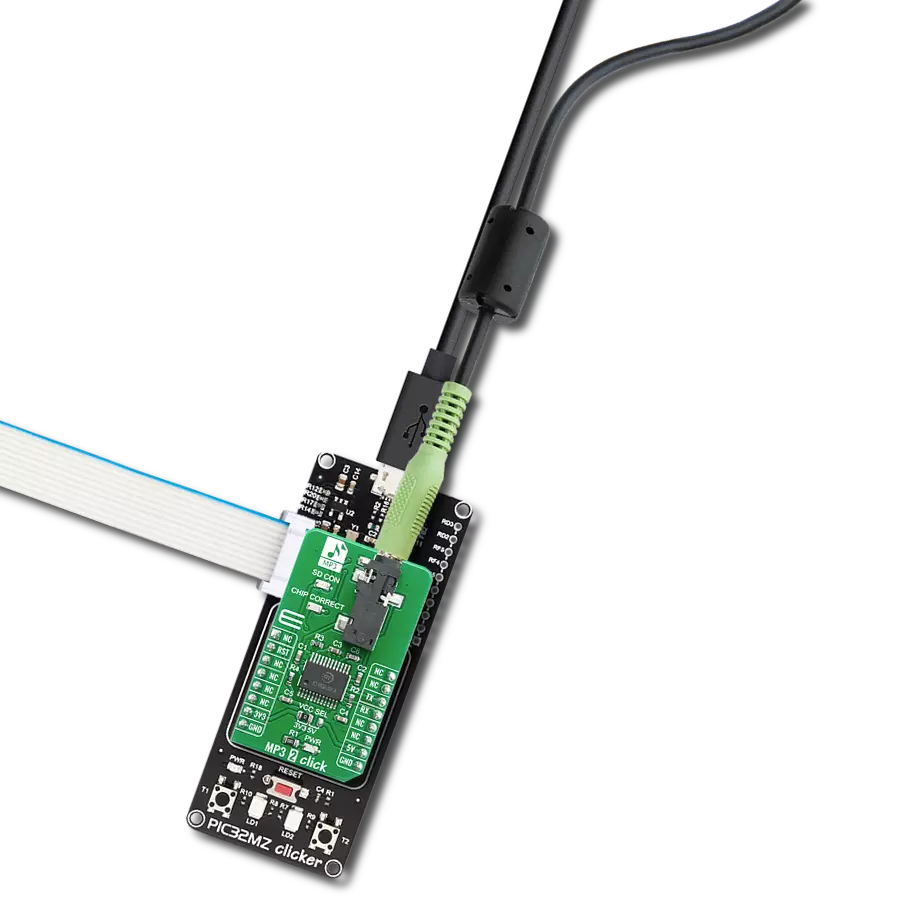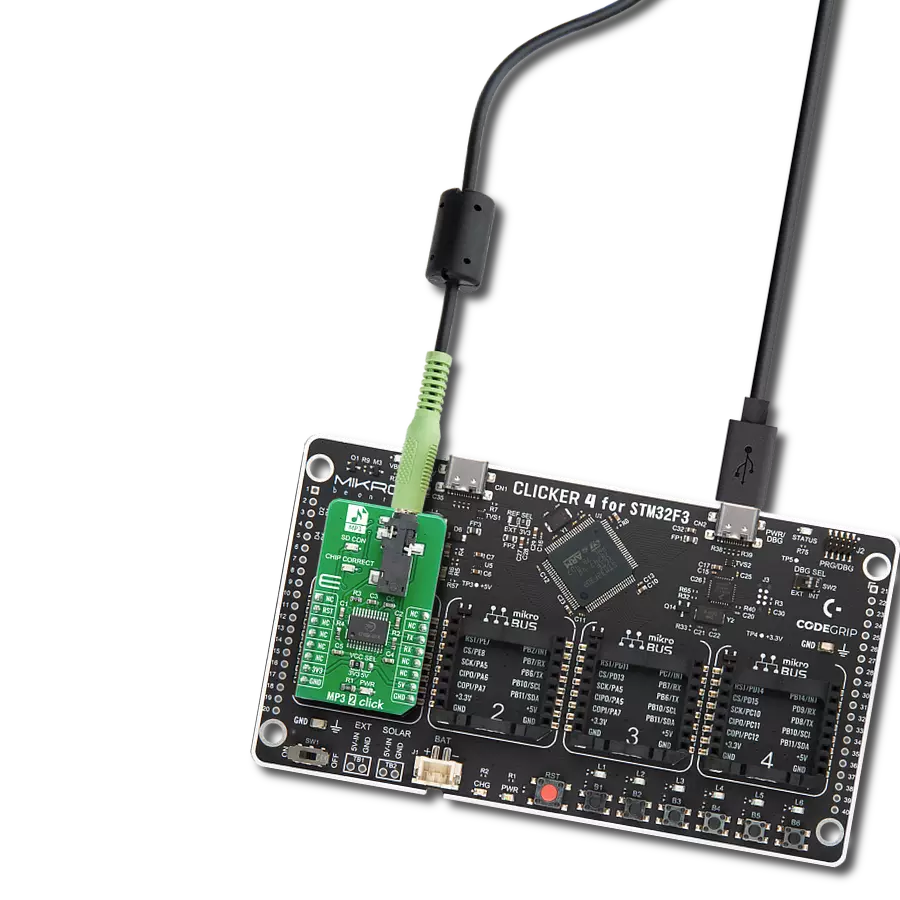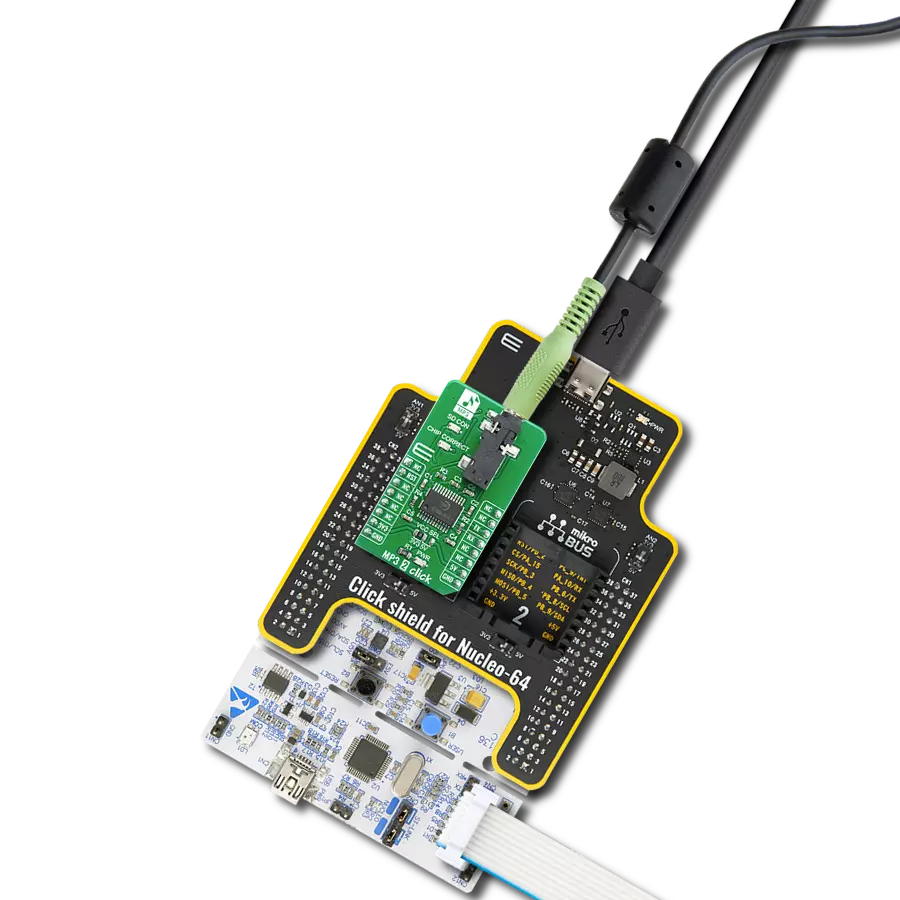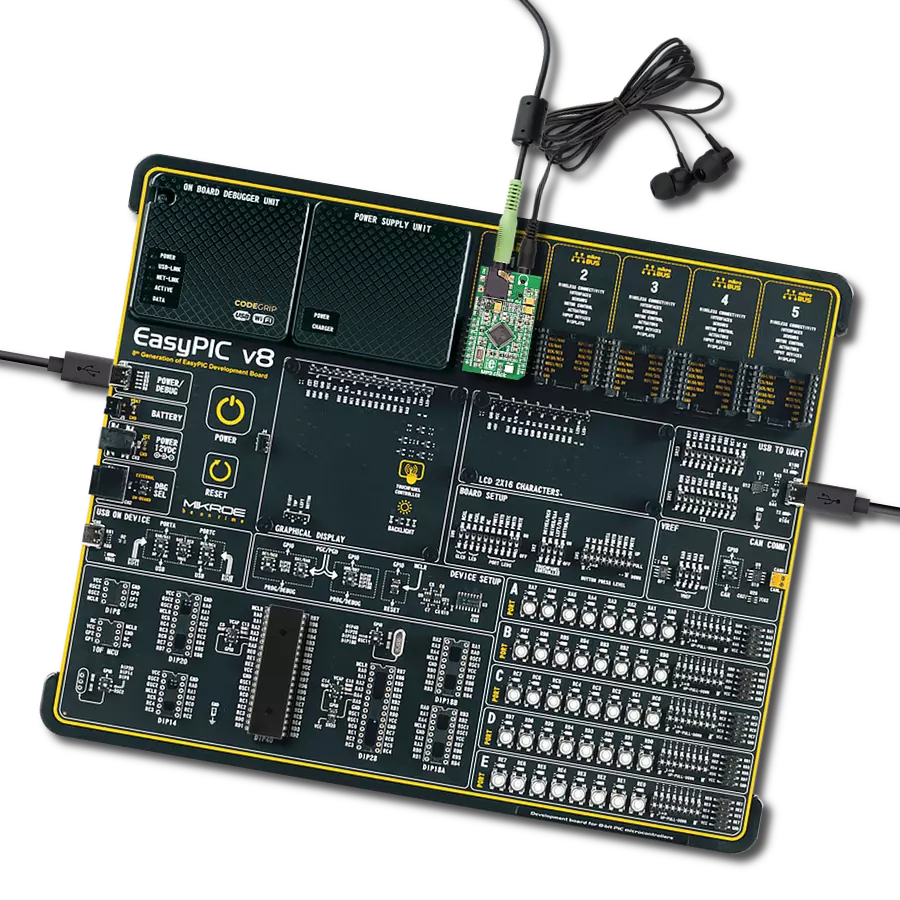Our cutting-edge MP3 solution empowers you to immerse yourself in the world of music with unparalleled clarity and convenience. It's your ultimate companion for enjoying your favorite tunes anytime, anywhere.
A
A
Hardware Overview
How does it work?
MP3 2 Click is based on the KT403A, a SOC chip solution with intergraded MCU, hardware audio MP3/WAV decoder and DSP, from Shenzhen Qianle Microelectronics Technology, as a main integrated circuit, micro SD card connector, and 3.5mm Audio Jack connector. Basically, it is a complete solution for a DAP (digital audio player) on a Click board, which can be controlled over the UART communication interface, using RX and TX pins of the mikroBUS™ socket. The default baud rate is 9600bps and it is customizable. On the MP3 2 Click, KT403A serves as a brain. It is complete SOC, which integrates16-bit MCU, audio decoder, and a 24-bit DSP. It also integrates the complete SD card interface and therefore, this click board
contains the connector onboard for an external micro SD card. Thanks to that, the user can insert a fair amount of memory if the long, continuous playback time is needed. MP3 2 Click has two status indication LEDs, onboard. The first one is named “SD Card” and it serves as an indication that the SD Card is present in the slot. The other one is “Chip Correct” and it indicates that the SD Card is correct and that the communication between the KT403A and the SD Card sucseeded. Besides the indicatora, there is one 3.5mm headphone jack onboard, so that MP3 2 Click can be connected directly to the next stage of the music playback system, ie. audio amplifier. Using the predefined command set, MP3 2 Click can be
fully controlled. One can Play/Pause a song, play a specific track, change a Volume Up and Volume Down between 0% and 100%, play the next or the previous song, repeat the current song, and more. Besides that, several sound effects are also supported, mentioned for different types of music: Normal, Jazz, Classic, Pop, and Rock. This Click board™ can operate with either 3.3V or 5V logic voltage levels selected via the VCC SEL jumper. This way, both 3.3V and 5V capable MCUs can use the communication lines properly. Also, this Click board™ comes equipped with a library containing easy-to-use functions and an example code that can be used as a reference for further development.
Features overview
Development board
Nucleo 32 with STM32F031K6 MCU board provides an affordable and flexible platform for experimenting with STM32 microcontrollers in 32-pin packages. Featuring Arduino™ Nano connectivity, it allows easy expansion with specialized shields, while being mbed-enabled for seamless integration with online resources. The
board includes an on-board ST-LINK/V2-1 debugger/programmer, supporting USB reenumeration with three interfaces: Virtual Com port, mass storage, and debug port. It offers a flexible power supply through either USB VBUS or an external source. Additionally, it includes three LEDs (LD1 for USB communication, LD2 for power,
and LD3 as a user LED) and a reset push button. The STM32 Nucleo-32 board is supported by various Integrated Development Environments (IDEs) such as IAR™, Keil®, and GCC-based IDEs like AC6 SW4STM32, making it a versatile tool for developers.
Microcontroller Overview
MCU Card / MCU

Architecture
ARM Cortex-M0
MCU Memory (KB)
32
Silicon Vendor
STMicroelectronics
Pin count
32
RAM (Bytes)
4096
You complete me!
Accessories
Click Shield for Nucleo-32 is the perfect way to expand your development board's functionalities with STM32 Nucleo-32 pinout. The Click Shield for Nucleo-32 provides two mikroBUS™ sockets to add any functionality from our ever-growing range of Click boards™. We are fully stocked with everything, from sensors and WiFi transceivers to motor control and audio amplifiers. The Click Shield for Nucleo-32 is compatible with the STM32 Nucleo-32 board, providing an affordable and flexible way for users to try out new ideas and quickly create prototypes with any STM32 microcontrollers, choosing from the various combinations of performance, power consumption, and features. The STM32 Nucleo-32 boards do not require any separate probe as they integrate the ST-LINK/V2-1 debugger/programmer and come with the STM32 comprehensive software HAL library and various packaged software examples. This development platform provides users with an effortless and common way to combine the STM32 Nucleo-32 footprint compatible board with their favorite Click boards™ in their upcoming projects.
Used MCU Pins
mikroBUS™ mapper
Take a closer look
Click board™ Schematic

Step by step
Project assembly
Software Support
Library Description
This library contains API for MP3 2 Click driver.
Key functions:
mp32_hw_reset- Reset the device functionmp32_rx_cmd- Received response data functionmp32_tx_cmd- Write command function.
Open Source
Code example
The complete application code and a ready-to-use project are available through the NECTO Studio Package Manager for direct installation in the NECTO Studio. The application code can also be found on the MIKROE GitHub account.
/*!
* \file
* \brief Mp32 Click example
*
* # Description
* This example demonstates the use of MP3 2 Click board.
*
* The demo application is composed of two sections :
*
* ## Application Init
* Initializes the driver and enables the Click board.
* Then sets the device to play songs from SD Card, and after that sets volume, and equalizer.
*
* ## Application Task
* Demonstrates the use of play, play next, and pause modes.
* Each step will be logged on the USB UART where you can track the program flow.
*
* @note
* A valid microSD Card that contains at least one mp3 sound on it needs to be
* inserted into the Click board.
*
* \author MikroE Team
*
*/
// ------------------------------------------------------------------- INCLUDES
#include "board.h"
#include "log.h"
#include "mp32.h"
#include "string.h"
// ------------------------------------------------------------------ VARIABLES
static mp32_t mp32;
static log_t logger;
// ------------------------------------------------------ APPLICATION FUNCTIONS
void application_init ( void )
{
log_cfg_t log_cfg;
mp32_cfg_t cfg;
/**
* Logger initialization.
* Default baud rate: 115200
* Default log level: LOG_LEVEL_DEBUG
* @note If USB_UART_RX and USB_UART_TX
* are defined as HAL_PIN_NC, you will
* need to define them manually for log to work.
* See @b LOG_MAP_USB_UART macro definition for detailed explanation.
*/
LOG_MAP_USB_UART( log_cfg );
log_init( &logger, &log_cfg );
log_info( &logger, "---- Application Init ----" );
// Click initialization.
mp32_cfg_setup( &cfg );
MP32_MAP_MIKROBUS( cfg, MIKROBUS_1 );
mp32_init( &mp32, &cfg );
Delay_ms ( 500 );
log_printf( &logger, "-------------------------\r\n" );
log_printf( &logger, " MP3 2 Click \r\n" );
log_printf( &logger, "-------------------------\r\n" );
Delay_100ms( );
mp32_hw_reset( &mp32 );
Delay_ms ( 100 );
mp32_set_device( &mp32, MP32_SDCARD );
mp32_set_volume( &mp32, 50 );
mp32_set_eq( &mp32, MP32_EQ_NORMAL );
Delay_ms ( 100 );
}
void application_task ( void )
{
log_printf( &logger, " >>> Play\r\n" );
mp32_play_mode( &mp32 );
// 10 seconds delay
Delay_ms ( 1000 );
Delay_ms ( 1000 );
Delay_ms ( 1000 );
Delay_ms ( 1000 );
Delay_ms ( 1000 );
Delay_ms ( 1000 );
Delay_ms ( 1000 );
Delay_ms ( 1000 );
Delay_ms ( 1000 );
Delay_ms ( 1000 );
log_printf( &logger, " >>> Next song\r\n" );
mp32_play_next( &mp32 );
// 10 seconds delay
Delay_ms ( 1000 );
Delay_ms ( 1000 );
Delay_ms ( 1000 );
Delay_ms ( 1000 );
Delay_ms ( 1000 );
Delay_ms ( 1000 );
Delay_ms ( 1000 );
Delay_ms ( 1000 );
Delay_ms ( 1000 );
Delay_ms ( 1000 );
log_printf( &logger, " >>> Pause\r\n" );
mp32_pause_mode( &mp32 );
Delay_ms ( 1000 );
Delay_ms ( 1000 );
Delay_ms ( 1000 );
}
int main ( void )
{
/* Do not remove this line or clock might not be set correctly. */
#ifdef PREINIT_SUPPORTED
preinit();
#endif
application_init( );
for ( ; ; )
{
application_task( );
}
return 0;
}
// ------------------------------------------------------------------------ END
Additional Support
Resources
Category:MP3
